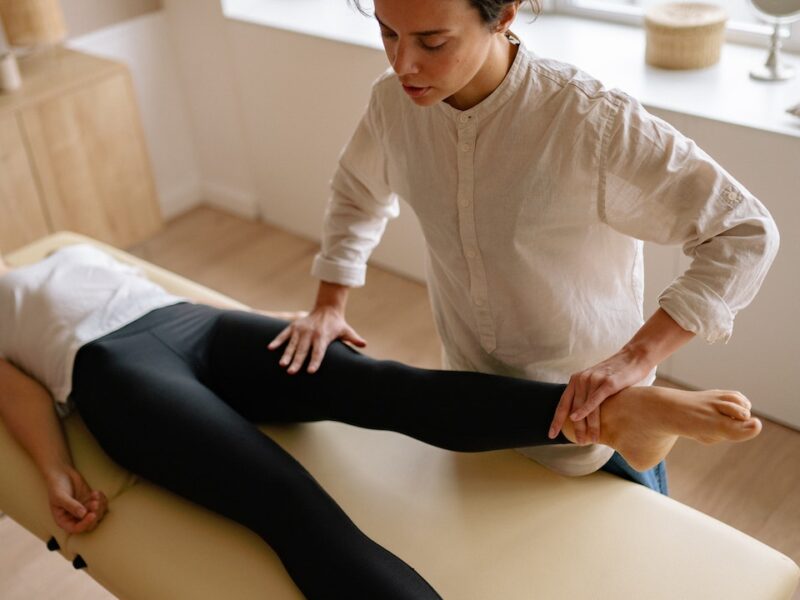Venous reflux (chronic venous insufficiency) is a condition that affects millions of people worldwide. Unfortunately, misconceptions about this condition often lead to confusion and misinformation. This article aims to clarify the myths surrounding venous reflux. You will find accurate, up-to-date medical facts to ensure you comprehensively understand this condition.
What is Venous Reflux?
Venous reflux is a vascular condition that primarily affects the veins in the legs. To understand venous reflux better, let’s delve into its fundamentals.
Risk Factors
– Age
– Gender
– Family History
– Obesity
– Pregnancy
Causes of Venous Reflux
Venous reflux develops when the one-way valves in your leg veins become weak or damaged. These valves are responsible for ensuring blood flows upward toward the heart. Weakening veins allow blood to flow backward and pool in the veins.
Common causes of venous reflux include:
– Valve Damage. Over time, the valves in your leg veins may become damaged, preventing them from closing properly.
– Deep Vein Thrombosis (DVT). It is a blood clot that appears in a deep vein. It can damage the valves and lead to reflux.
– Obesity. Excess body weight can increase pressure on the veins, contributing to valve dysfunction.
– Pregnancy. Hormonal changes and the higher pressure of the growing uterus can impact vein function during pregnancy.
– Prolonged Standing or Sitting. Activities that involve long periods of inactivity can strain the leg veins and increase the risk of reflux.
Relationship with Varicose Veins
Venous reflux is closely associated with the development of varicose veins. Varicose veins are enlarged, twisted veins that often appear on the legs. They can be a visible symptom of venous reflux. Understanding this connection is essential when considering the impact of venous reflux on your vascular health. Consult the available varicose vein treatment Atlanta to learn more about its benefits and results.
Venous Reflux Myths vs. Medical Facts
In this section, we will tackle common misconceptions surrounding venous reflux. Let’s unravel the truth and shed light on the myths that have lingered for too long.
Myth #1: Venous Reflux Only Affects the Elderly
Facts: While it’s true that the risk of venous reflux increases with age, this condition can affect people of all age groups. Younger individuals, especially those with risk factors, can also develop venous reflux. Thus, people of all ages must know the condition and its potential symptoms.
Myth #2: Venous Reflux is Just a Cosmetic Issue
Facts: Venous reflux is not merely a cosmetic issue. While it can lead to visible symptoms like varicose veins, it can also cause severe complications if left untreated. These complications may include skin ulcers and blood clots. Treating venous reflux is not only about aesthetics but also about maintaining your vascular health.
Myth #3: You Can’t Prevent Venous Reflux
Facts: You can’t eliminate the risk of venous reflux. However, you can implement preventive measures to lower your chances of developing the condition. Some of these lifestyle changes are the following:
– Staying physically active
– Avoiding prolonged sitting or standing
– Wearing compression stockings (if recommended)
Myth #4: Surgery is the Only Treatment Option
Facts: Surgery is one of the treatment options for venous reflux, but it’s not the only one. Depending on the severity of the condition, non-surgical approaches can effectively manage venous reflux. Treatment choice depends on individual factors and should be discussed with a vein specialist. If you’re looking for expert advice and personalized treatment options, consider consulting Vein Specialist Centers for the best approach to managing venous reflux.
Myth #5: Venous Reflux is Always Painful
Facts: While pain can be a symptom of venous reflux, not all individuals suffer from discomfort. Some people may have mild or no pain but still exhibit other symptoms. The absence of pain doesn’t mean the condition should be ignored, as other health complications can arise.
Myth #6: Compression Stockings Are Ineffective
Facts: Compression stockings are valuable in managing venous reflux when used correctly. They help improve blood flow in the legs, reduce swelling, and alleviate symptoms. Vein specialists often recommend the appropriate compression level and usage for each patient.
Myth #7: Venous Reflux Will Go Away on Its Own
Facts: Venous reflux is a chronic condition that typically does not resolve independently. Proper management can lead to worsening symptoms and complications over time. Early diagnosis and treatment are essential to prevent these issues.
Myth #8: You Can’t Live a Normal Life with Venous Reflux
Facts: While venous reflux can impact your life, it doesn’t mean you must give up your normal activities. With the proper treatment and lifestyle adjustments, many people with venous reflux lead fulfilling lives. Working closely with your vein specialist is essential to manage the condition effectively.
Myth #9: Venous Reflux is Rare
Facts: Venous reflux is more common than you might think. Millions of people worldwide are affected by this condition. Raising awareness about venous reflux is essential to ensure people receive timely diagnosis and treatment.
Myth #10: Venous Reflux is a Sign of Poor Circulation
Facts: Venous reflux is a specific condition related to the veins in your legs. It doesn’t necessarily reflect your overall circulatory health. While venous reflux can indicate problems with the circulation in your legs, it’s essential to assess your circulation comprehensively to determine any underlying issues.
Conclusion
Separating venous reflux myths from medical facts is crucial for anyone affected. By dispelling these misconceptions and embracing the facts, you can make informed decisions about your well-being and enjoy a better quality of life.





 How to Create an Effective Scope of Work in 6 Steps
How to Create an Effective Scope of Work in 6 Steps